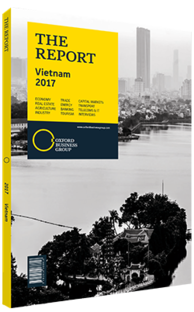Local purchasing drives growth in Vietnam's property market
After the last downturn in the real estate market, things have picked up considerably in Vietnam. This is especially true in terms of access to financing. As commercial lending has resumed, mortgages have been more widely available, while foreign purchasers are no longer barred from buying properties after regulatory changes were enacted to allow foreigners to buy up to 30% of any condominium building or a maximum of 250 houses in any administrative ward.
Driving Growth
The country’s macro indicators have helped in this regard, as the trade deficit has been narrowing since 2011, stabilising the dong. Meanwhile, inflation fell from 9% in 2012 to an expected 4.9% in 2016, allowing deposit and borrowing rates to fall to 5% and an average of 8.5%, respectively. Interest rates had stood as high as 17% in 2011. Local purchasing power is driving growth as property developers build affordable homes aimed at young couples. EE Soon Hean, general director of Nippon Paint Vietnam, told OBG that he is seeing younger managers with average incomes of $2000, boosting the demand. Furthermore, household debt is low compared to neighbouring countries. Property buying has also been bolstered by improved credit availability for the middle- and low-income segments.
According to a central bank report on credit growth for the first seven months of 2016, the outstanding loan balance for real estate purchases accounted for 13% of total credit growth and of that, 39% came from home purchases. “This shows that the middle- and low-income segments have long been in dire need of better credit availability in Vietnam,” Le Viet Hai, chairman and general director of Hoa Binh Construction Company, told OBG. “We have seen how superior credit availability for the middle class in developed countries, especially in the US, results in the real estate market driving the credit market, and there are no doubts the market here follows the same trend. The high demand for improved credit availability and the sheer large percentage of middleand low-income earners are the main factors.”
However, he pointed out that it is necessary for the government to pay close attention to the improvement of credit availability and ensure that it is sustainable, appropriate and in-sync with market movements. A CIMB report highlighted the greater affordability on the market, noting a 50% drop in real estate prices from the peak of the last bubble (before prices started rising again in early 2014), as well as a fall in mortgage rates from 22% in 2012 to an all-time low of 8% in early-2015. The report stated that around 50% of property transactions in 2015 were financed by mortgages compared to less than 15% five years earlier. In addition, banks are focusing on lending to end-buyers of apartments and houses, rather than real estate developers and speculators, who had borrowed heavily during the bubble and had contributed to the current non-performing loan hangover.
Bubbling Up
Nevertheless, there are still fears that another bubble is forming. This concern was highlighted by the State Bank of Vietnam (SBV), which has started to warn banks to rein in lending, especially to the high-end sector. The SBV increased the risk weight of loans to the real estate sector from 150% to 200% on January 1, 2017. This comes on the back of SBV’s Ho Chi Minh City office reporting that at the end of the third quarter of 2016, banks’ outstanding loans were up 13.3% year-on-year at more than VND1.4trn ($62.2bn). “For now it is the middle class that is in need of housing. There are 1.5m new adults per year in Vietnam and demographic growth is still the most important driver,” Pierre-Jean Malgouyres, general director of Archetype Group, Vietnam’s largest multidisciplinary construction consultancy, told OBG. Indeed, as demand for affordable housing still remains high, bank financing for local buyers is not expected to dry up anytime soon and more Vietnamese are set to tap into mortgages in the coming years.
You have reached the limit of premium articles you can view for free.
Choose from the options below to purchase print or digital editions of our Reports. You can also purchase a website subscription giving you unlimited access to all of our Reports online for 12 months.
If you have already purchased this Report or have a website subscription, please login to continue.

